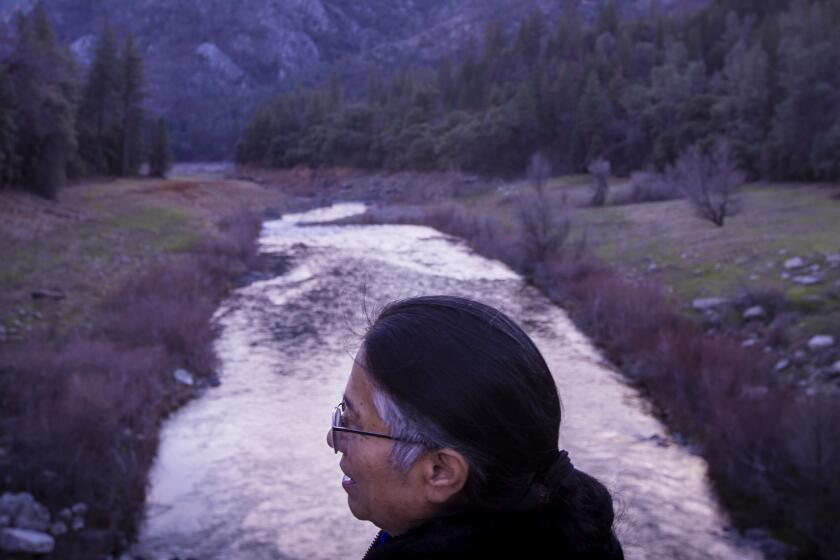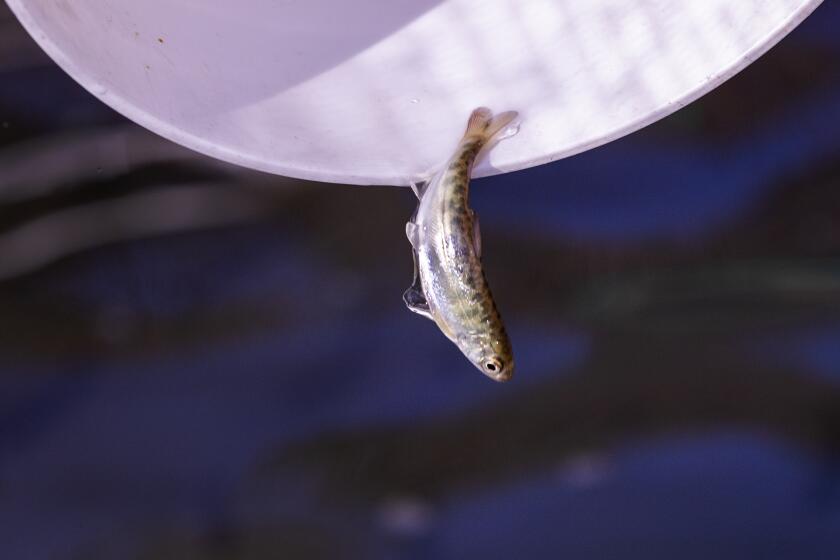Salmon fishing banned along California coast as population plummets
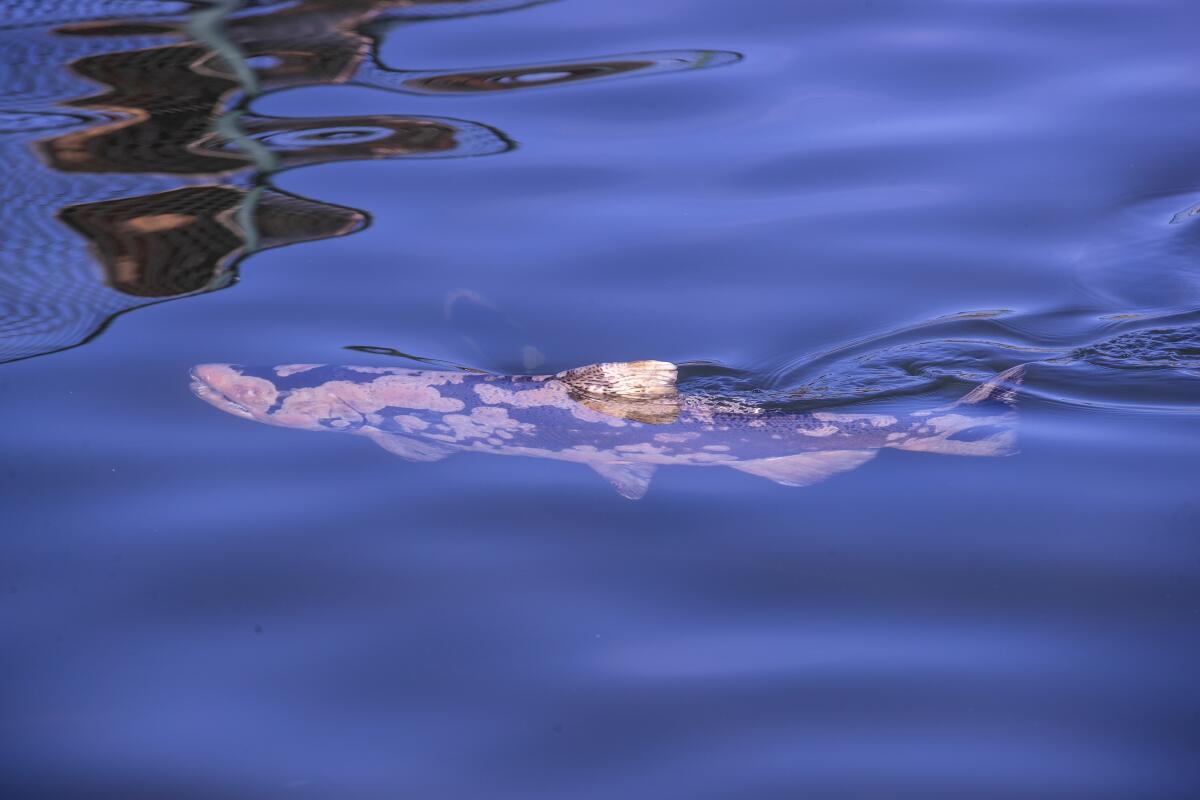
Fishing boats would normally fan out along the California coast to catch Chinook salmon in the spring, but regulators have announced the fishing season will be shut down this year.
It’s only the second time in history that the ocean salmon fishery has been closed in California, and the decision reflects a major decline in fish populations after the state’s driest three-year period on record.
People who depend on salmon fishing said the closure will bring economic hardships for many in the industry.
“This whole situation is really depressing,” said Sarah Bates, who fishes with a commercial boat and usually sells her catch through a community fishing association in San Francisco.
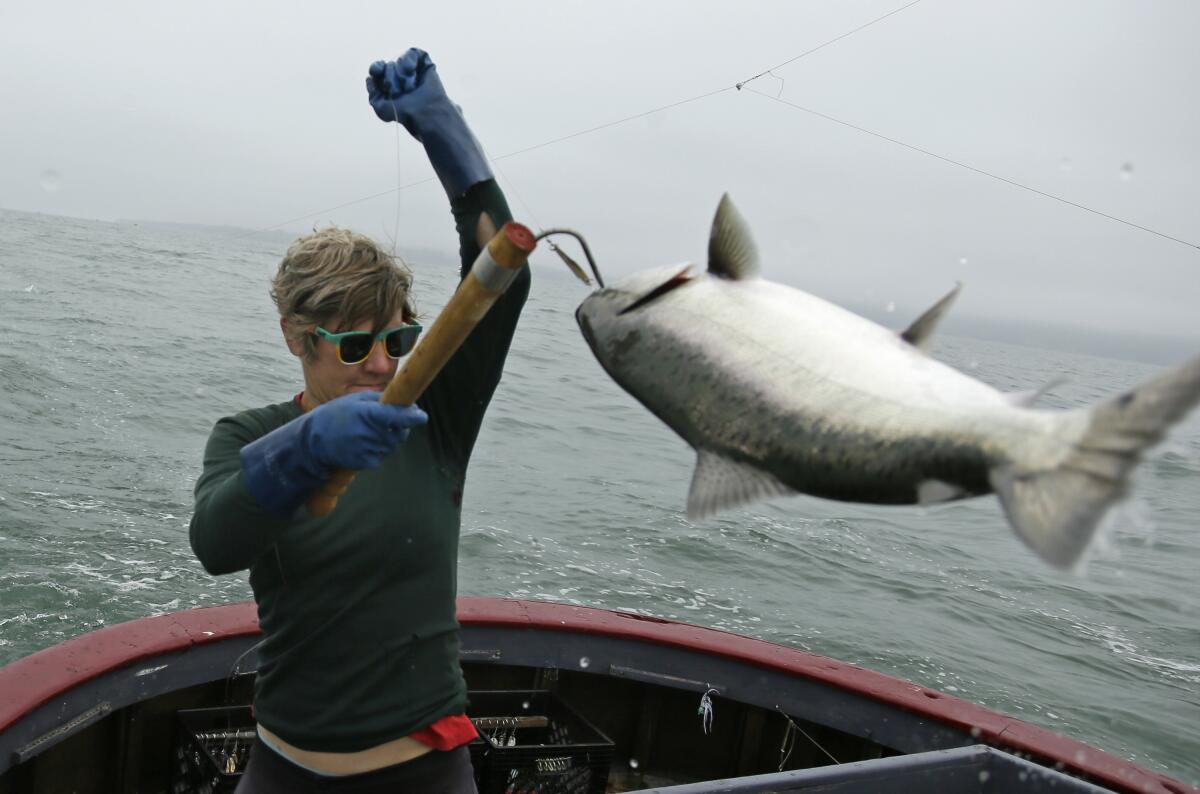
“I think we’re going to lose some boats from both our commercial and recreational fleets,” Bates said. “The public of California is going to have to get used to not having salmon on their barbecue, unless they want it from very far away.”
The Pacific Fishery Management Council, a multistate, quasi-federal body that decides on ocean fishing seasons, adopted proposals to close the fishing season at a meeting last week, and is expected to formally approve the closure at a meeting in early April.
The National Marine Fisheries Service also announced that the coastal sport fishing season, which had been scheduled to open in most areas on April 1, will be canceled through May 15.
Fisheries officials have cited the nearly record-low numbers of fall-run Chinook salmon that returned to spawn in the Sacramento River last year.
The California Department of Fish and Wildlife said the estimated number of 3-year-old adults that are likely to return to the Sacramento River this year to spawn is less than 170,000, one of the lowest forecasts in the 15 years that officials have been using their current assessment method.
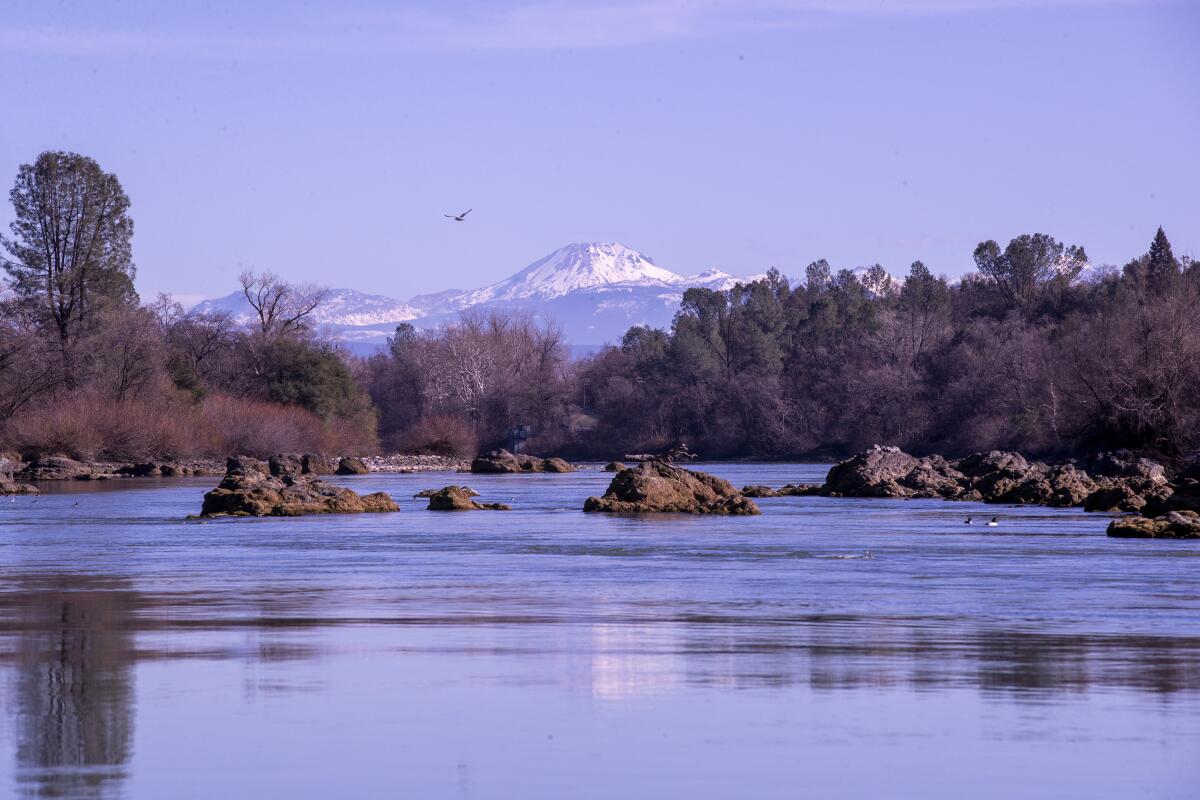
Officials estimated fewer than 104,000 fall-run Chinook are likely to return to the Klamath River, the second lowest estimate since 1997.
The only other time salmon fishing has been entirely shut down along the California coast was in 2008.
“We don’t have enough salmon this year to have a season,” said John McManus, president of the Golden State Salmon Assn.
“This is incredibly sad,” McManus said. “There’s thousands of people in California and in Oregon both that rely on Central Valley salmon to make a living.”
Fishing and environmental groups have criticized Gov. Gavin Newsom’s administration for water policies they argue have failed to prioritize river flows for salmon.
“This didn’t have to happen,” McManus said. “We don’t have to suffer this again in the future, and we won’t if some changes are made.”
‘A glimmer of hope’: Tribe offers prayers for endangered Chinook salmon as eggs are returned to the McCloud River for the first time since the 1940s.
His association, together with other fishing and environmental groups, has two pending court cases against the state and the federal government challenging water management policies.
The Golden State Salmon Association has blamed water policies that it says benefit California’s agriculture industry.
“Dam operation decisions favoring agriculture over salmon survival have resulted in very poor natural salmon reproduction in recent years,” the association said in a press release, adding that “lethal hot water left over after dam releases for agriculture” has killed incubating salmon eggs.
Last month, environmental and fishing advocates condemned a request by the Newsom administration to temporarily waive environmental water-quality rules in the Sacramento-San Joaquin River Delta in an effort to store more water in reservoirs. They argued that the request, which was approved by the State Water Resources Control Board, was harmful for Chinook salmon.
State officials defended the approach, saying other existing protections were adequate. They later ended the waiver of water-quality rules, saying the plentiful storm runoff made it no longer necessary.
State officials have pointed out that declines in salmon populations typically follow dry years, and have said they are prioritizing efforts to rebuild fish populations.
Chuck Bonham, director of the state Department of Fish and Wildlife, said recently that the decline is part of a decades-long trend and the last three years of record drought “only further stressed our salmon populations.”
Bonham said the low population reflects the extremely dry conditions of 2020.
Fluctuations in salmon numbers are typically tied to flows in rivers, with wetter conditions helping the fish flourish.
Bonham said the storms and high river flows this year should benefit the salmon. In 2010, for example, ample rainfall led to higher estimates of returning adults in 2012 and 2013.
“That gives you some optimism that in three years from now, you could see the same kind of thing,” Bonham said. “This can turn around.”
When salmon return to California rivers to spawn, they lay their eggs in gravel nests in streambeds. The juvenile fish migrate to the Pacific, often returning in three years to complete the cycle.
Normally, heavy spring runoff is ideal for pushing young salmon downriver to the ocean. But because of the low numbers of adult salmon that came back to spawn last year, McManus said, “our best guess is that there are not a ton of wild baby salmon waiting to take advantage of this runoff.”
State and federal officials also manage hatcheries that rear and release millions of Chinook salmon each year. And high river flows this spring are expected help more of those salmon thrive as they are released in the coming months.
Dams have for decades blocked salmon from reaching their traditional spawning streams, and the fish have increasingly struggled as climate change has intensified drought and brought warmer temperatures.
Complicating the situation, scientists have found that a deficiency of thiamine is harming Chinook populations, and they suspect salmon may be feeding too heavily on numerous anchovies.
Winter-run Chinook salmon numbers are at the lowest they’ve ever been. But scientists say it’s not because of high temperatures or the historic drought. Instead, they say, it’s their diet.
In the Sacramento River, other salmon runs are at risk. Spring-run Chinook are listed as threatened under the Endangered Species Act, while winter-run Chinook are endangered.
Both commercial and recreational anglers catch fall-run Chinook along the coast. Officials said the commercial fishery brought in more than 211,000 fish in 2022.
Last year’s season included a range of permitted dates from May to October in different zones along the coast, while the Klamath zone in far Northern California was closed.
In one plan aimed at helping salmon, four dams on the Klamath River are scheduled to be removed, with work starting this year.
State and federal biologists have also worked together with leaders of the Winnemem Wintu Tribe on an experimental project on the McCloud River, where they released thousands of juvenile winter-run salmon last year, allowing them to swim upstream of Shasta Dam for the first time in 80 years.
The commercial fishery, meanwhile, could take time to recover.
Bates said she and others anticipate the 2024 ocean fishing season will also be closed or limited. She said some in the commercial industry will probably adapt by focusing more on Dungeness crab and other fisheries, including black cod, halibut and rockfish.
“Those of us that survive this closure are going to have to be creative and hardworking, which fishermen generally are,” Bates said. “There are a fair number of us that I think will drop out, and a fair number of us that will survive.”
She and others said the state and federal hatcheries will play a vital role in helping the fish population. Bates said she is somewhat optimistic about how the salmon will fare in the long term.
“I don’t think it’s a death knell,” Bates said. “This is a very resilient species. So I think with appropriate water management and appropriate fisheries management, that we will recover. I just hope that there are still boats and captains around when the species recovers.”
